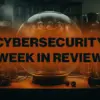
Xona and Forescout have announced a partnership to deliver secure remote access and enhanced cybersecurity for operational technology (OT) environments across critical infrastructure operators. By integrating Xona’s secure remote access platform with Forescout’s 4D Platform, the collaboration enables industrial organizations to maintain connectivity while minimizing the exposure of critical assets to cyber risk.
Purpose-built to support electric, oil and gas, water, transportation and logistics, and healthcare organizations to drive operational resilience, the move will give industrial and critical infrastructure operators secure, policy-enforced access to operational systems, backed by continuous network visibility and automated enforcement.
As threats to industrial control systems intensify and compliance requirements become more demanding, the integration of Forescout’s continuous device visibility, intelligence, and control with Xona’s secure remote access capabilities enables operators to modernize security without compromising uptime, safety, or regulatory posture. This partnership ensures that every user and device interaction is authenticated, authorized, and audited, delivering secure, compliant, and uninterrupted operations across critical infrastructure.
“Our mission is to help critical infrastructure teams connect securely without exposing critical assets,” said Bill Cantrell, chief product and operating officer at Xona. “By integrating with Forescout for OT Security, we’re making that mission easier by enabling real-time asset data and security oversight. This partnership means zero-trust access decisions can now be driven by live context—not just static policies. It’s a major step forward in OT cyber resilience.”
The platforms combine the unique strengths of both organizations:
- Zero-Trust Access with Reduced Operational Complexity: Xona delivers secure, browser-based access to critical systems without requiring VPNs, clients, or network tunnels. When paired with Forescout’s real-time asset discovery, security teams can dynamically identify and import assets to configure identity-level controls. This ensures users only access authorized assets and systems when they’re authorized to access them.
- Context-Aware Policy Enforcement: Forescout’s dynamic risk scoring and segmentation logic automatically influence access permissions and session behavior inside Xona. High-risk assets can be isolated, and user access can be denied or revoked in real time, preventing lateral movement and enforcing least privilege access across the OT environment.
- Built-In Compliance and Session Auditing: Xona’s high-fidelity session recording, file transfer governance, and policy-based controls are now enriched with live network telemetry from Forescout, simplifying audit prep for standards like NERC CIP, IEC 62443, TSA SD2, and OTCC-1. Every session is visible, controlled, and accounted for.
- Secure Vendor and Third-Party Access Without Exposure: Together, Xona and Forescout eliminate the traditional blind spots around remote access. Contractors, OEMs, and internal users can gain time-limited access with full oversight, without ever exposing underlying network layers or requiring standing credentials.
“OT environments demand both visibility and control,” said Christina Hoefer, vice president of OT/ IoT Vertical and Strategy at Forescout. “Our partnership with Xona extends that control to secure remote access, ensuring every session is verified, authorized, and monitored with zero exceptions. Together, we’re helping customers enforce zero trust principles across their most critical infrastructure to protect OT, IT, and cloud environments at scale.”
Last week, Forescout Technologies announced a partnership with Coalfire to accelerate the FedRAMP Authorization to Operate (ATO) processes for Forescout Cloud Services. The Coalfire collaboration builds on Forescout’s 20-year track record of providing cost-effective security solutions for U.S. federal civilian and Department of Defense (DoD) agencies to support them in modernizing their cybersecurity posture in line with the Federal Zero Trust Strategy, including the DoD’s device requirements and evolving cloud security mandates.

Industrial Cyber News Desk
Industrial Cyber News Desk



